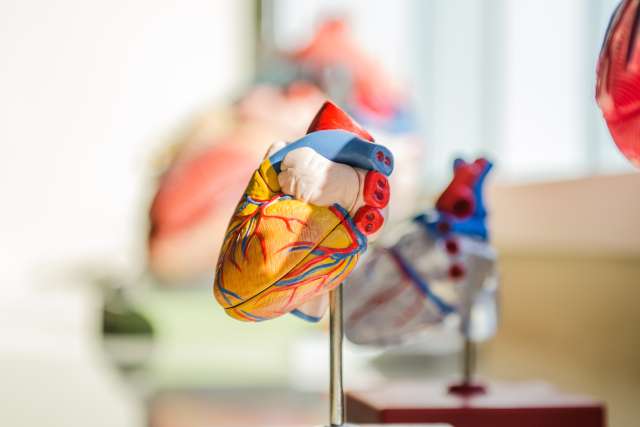Dear Doctors: Our mom had an aortic dissection last fall, and she almost died. It happened all of a sudden, and she was in good health. That makes her worry that it might happen again. Can you please talk about aortic dissection? Who is at risk, and how do you keep it from happening again?
Dear Reader: Let's begin with the aorta, which is the largest blood vessel in the body. It carries oxygen-rich blood away from the heart and delivers it to the network of vessels that will transport it throughout the body. The aortic wall has three layers. The inner layer forms the tube that carries the blood. The center layer includes specialized proteins that allow the aorta to expand and contract as needed for optimal blood flow. The outermost layer, which is made up of connective tissue, anchors the vessel in place. Recent research suggests that it also plays a key role in vascular health.
When someone has an aortic dissection, it means a split or tear has formed along the innermost wall. This is a medical emergency. The gap allows blood to escape and, with the repeated pressure of the heartbeat, get forced into the outer layers. This causes the layers of the aorta to separate, which is known as dissection. Aortic dissection can cause a stroke, result in heart or organ damage and can lead to death.
The aorta follows a curving, branching path. It rises away from the heart, arcs down through the chest cavity and into the abdomen. The most common site of dissection is the span closest to the heart. This is also the most dangerous. Less often, a fissure can occur in the lower reaches the aorta, as it travels through the abdomen.
Symptoms include sudden and severe pain in the chest, abdomen or back. It has often been described as a sensation of ripping or tearing. The individual may also develop a weak or disordered pulse and have difficulty breathing. Some people lose motor function on one or both sides of the body, become unable to speak or lose consciousness.
When someone experiences the symptoms of aortic dissection, immediate medical care is crucial. Depending on each specific case, treatment consists of surgical repair; medications to manage heart rate, blood pressure and bleeding; or both surgery and medication.
Aortic dissection is more common in men than in women. Risk factors include having uncontrolled high blood pressure, hardening of the arteries, a weakened or bulging aorta and congenital defects of the heart or its valves. Certain genetic disorders that adversely affect blood pressure or connective tissue structure can also increase someone's risk.
Getting blood pressure under control is an important part of prevention, as this reduces stress on the aorta. Reaching and maintaining a healthy weight, eating a healthful diet and getting regular exercise are also beneficial. Someone who has had an aortic dissection should remain under the care of a cardiologist. The doctor will oversee any medications that have been prescribed, and if surgical repairs have been done, will regularly monitor their status.
(Send your questions to [email protected], or write: Ask the Doctors, c/o UCLA Health Sciences Media Relations, 10960 Wilshire Blvd., Suite 1955, Los Angeles, CA, 90024. Owing to the volume of mail, personal replies cannot be provided.)





